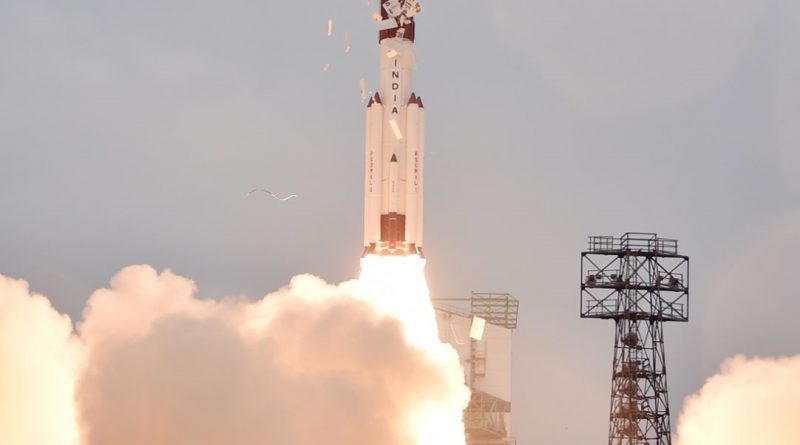India’s PSLV closes Record-Setting 2016 with successful ResourceSat-2A Launch
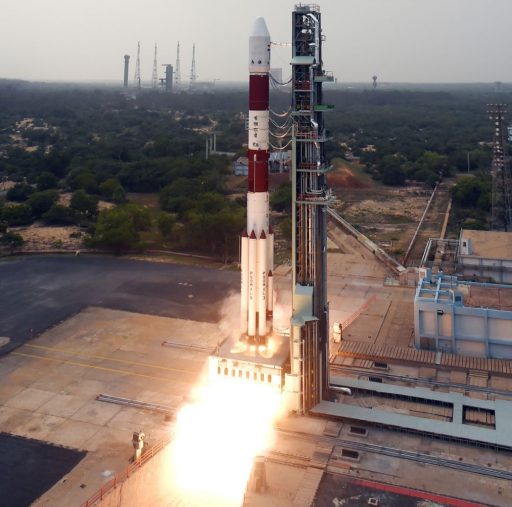
India’s Polar Satellite Launch Vehicle lifted off from the Satish Dhawan Space Center on Wednesday, embarking on its year-closing mission to deliver the ResourceSat-2A environmental-monitoring satellite to orbit and close out another record setting year for India’s space program.
PSLV blasted off from India’s East Coast at 4:55 UTC under the loud thunder of its core stage and six Solid Rocket Boosters, first heading to the south-east to avoid overflying the island of Sri Lanka before making a guided turn to the south west to head towards a Polar Orbit. The 45-meter PSLV rocket performed admirably to check off its sixth successful launch of 2016 and send ResourceSat-2A on its way 18 minutes after liftoff.
Wednesday’s flight closed a busy year for the Indian Space Research Organization, continuing to push the record for most missions flown in a calendar year.
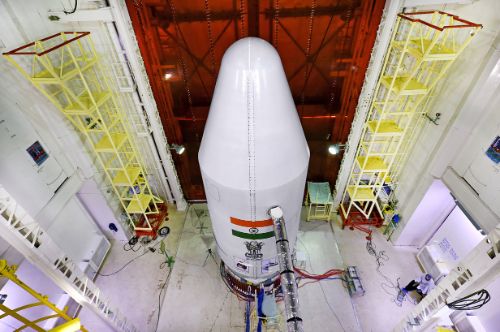
ISRO has been stepping up their game in the last three years, flying four missions for the first time in 2014, pushing the record to five flights in 2015 and adding two more for 2016. Of India’s seven orbital missions flown this year, one was executed by the Geosynchronous Satellite Launch Vehicle while the other six were completed by PSLV – representing a new record for India’s workhorse.
2016 began with a salvo of three PSLV launches in support of the Indian Regional Navigation Satellite System, deploying the final three satellites to orbit for full operational services of the constellation. In June, PSLV lifted the CartoSat-2C satellite and a group of small satellites into orbit followed by the lone GSLV launch of the year in September which carried the INSAT-3DR weather satellite to orbit.
In late September, ISRO achieved another first – using PSLV for the launcher’s first multi-orbit mission with multiple upper stage burns to deliver the SCATSat-1 ocean-wind monitoring satellite into a different orbit than a group of secondary payloads carried on that flight. 2016 also saw a pair of sub-orbital flights from Satish Dhawan in support of India’s Reusable Launch Vehicle Program, demonstrating a winged space plane and Hypersonic Scramjet engine.
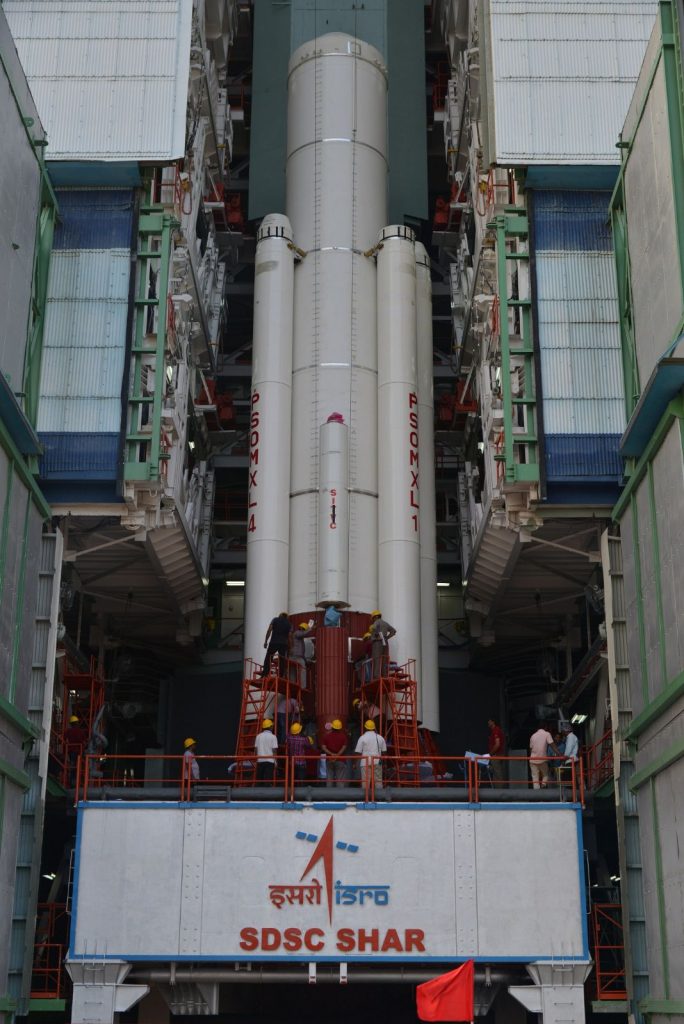
A steady increase in PSLV’s launch rate and the introduction of India’s GSLV rockets into operational service cuts the country’s reliance on foreign launch opportunities while also opening up access to the commercial launch market, especially for PSLV that has become a cost-effective option for foreign payloads to ride as secondary passengers.
Wednesday morning’s liftoff came after a 36-hour launch countdown that was shortened by around 12 hours compared to previous missions owed to the introduction of a Remote Umbilical Fill & Drain System on the PSLV rocket’s upper stage that allows the stage to be loaded with hypergolic propellants via remote control. The addition of remote fueling interfaces to PSLV is expected to further accelerate its launch countdown and no longer involve engineers directly handling the toxic hypergolic propellant combination.
The PSLV C36 mission also introduced an upgrade to the rocket’s avionics by replacing foreign electronics with microprocessor technology from India and premiering a new navigation system and Li-Ion power source on the upper stage. Instead of carrying secondary payloads on the C36 mission, PSLV was outfitted with a series of advanced avionics packages that were being tested in flight conditions for future use on the GSLV rocket series.
PSLV was also outfitted with five cameras to capture separation events of the boosters and the rocket’s four stages that were responsible for pushing ResourceSat-2A into orbit.
>>ResourceSat-2A Satellite Overview
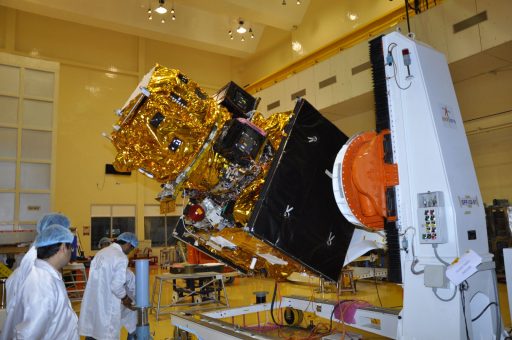
ResourceSat-2A, weighing in at 1,235 Kilograms, is a data continuity mission for the original ResourceSat launched in 2003 and intended as a replacement for ResourceSat-2 launched in 2011 for a planned mission of five years. The 2A satellite is nearly identical to the ResourceSat-2 spacecraft, based on the Indian Remote Sensing Satellite Platform and hosting a trio of Earth-watching instruments.
ResourceSat-2A is outfitted with a pair of Linear Imaging Self-Scanning Sensors (LISS-3 & 4) and an Advanced Wide Field Sensor (AWiFS) to deliver a combination of wide-swath data and high-resolution color imagery to satisfy the demands of a wide user community in agriculture, forest mapping, water resource management, rural infrastructure, and disaster management.
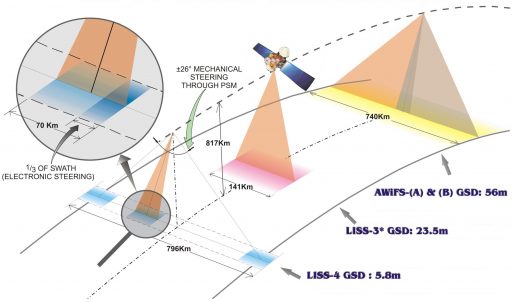
LISS-4 is the high-resolution instrument of the satellite and delivers imagery at a resolution of 5.8 meters, either operating its three color channels simultaneously for a ground swath of 23 Kilometers or only using one channel and broadening the ground swath to 70 Kilometers. The other LISS instrument covers four spectral bands in the visible and near-infrared at a 23.5-meter resolution and a swath width of 141 Kilometers.
The AWiFS sensor package covers a wide ground swath of 740 Kilometers at a resolution between 56 and 70 meters, using the same four channels covered by LISS-3 and finely tuned to specific wavelengths that provide insight into different environmental properties such as plant health and total biomass.
ResourceSat, along with the OceanSat, ScatSat and CartoSat programs, represent India’s primary Earth-observation programs, delivering a full spectrum of data to monitor Earth’s land mass, the global oceans and deliver data on the atmosphere.
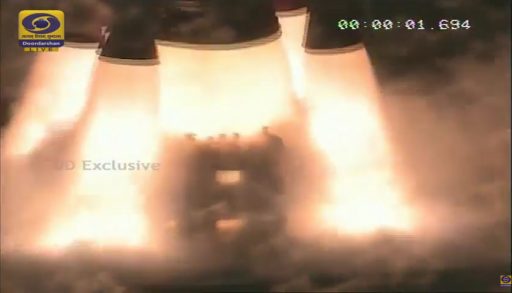
India’s PSLV rocket came to life at 4:55 UTC on Wednesday morning when firing up the solid-fueled core stage and four of the six Solid Rocket Boosters clustered around it. In a light drizzle, PSLV catapulted itself off the ground with a thrust of 700-metric ton force, turning to an initial heading to the south-east to fly out over the ocean before beginning a guided right-hand turn to transition its flight path to the south-south-west in a an ascent profile designed to avoid the island of Sri Lanka located south east of the space center.
25 seconds into the flight, PSLV fired up the remaining two boosters to increase its total thrust to 803 metric ton force. The 13.5-meter long ground-lit boosters separated in pairs at T+70 seconds followed twenty seconds later by the two air-lits while the core stage continued powering the rocket to a speed of over two Kilometers per second.
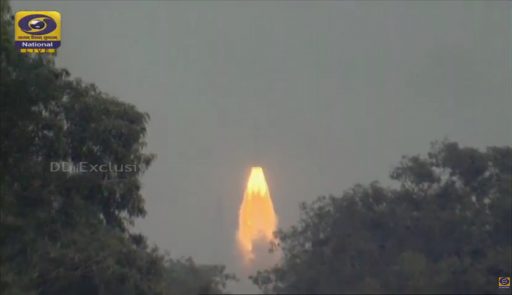
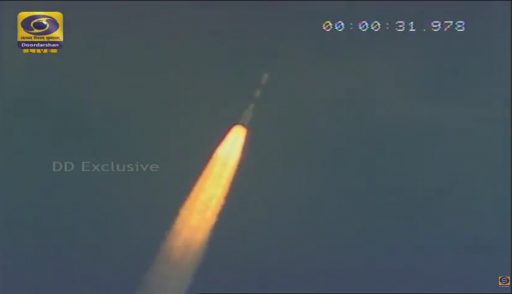
PS1 exhausted its propellant supply one minute and 50 seconds into the mission, separating from the second stage at an altitude of 74 Kilometers. Once clear of the 20.3-meter first stage, PS2 fired up its 81,500 Kilogram-force Vikas engine for a burn of two and a half minutes, tasked with lifting the rocket to an altitude of over 270 Kilometers and increasing its speed to 4 Kilometers per second.
With the second stage up an running, PSLV dropped its payload fairing two and a half minutes into the mission and switched to Closed Loop Control five seconds later to process navigation data and meet its precise orbital target.
Having burned over 40 metric tons of hypergolic propellants, the second stage handed powered flight over to the PS3 stage four minutes and 22 seconds after launch. PS3 burned through 6,700 Kilograms of solid propellant in just under two minutes, generating 25 metric-ton force of thrust to accelerate the stack by another two Kilometers per second.
The vehicle held the spent third stage for 2.5 minutes while climbing in altitude so that the fourth stage could insert the stack into a circular orbit via a single, continuous firing. At T+8 minutes and 54 seconds, ten seconds after dropping the PS3, the fourth stage fired up its two L-2-5 engines to finish the job of lifting ResourceSat-2A into orbit.
Delivering 1,500 Kilogram-force of thrust, the fourth stage burned for a little over eight minutes and reached an orbit of 818.7 by 822.5 Kilometers, inclined 98.7 degrees according to the rocket’s navigation system.
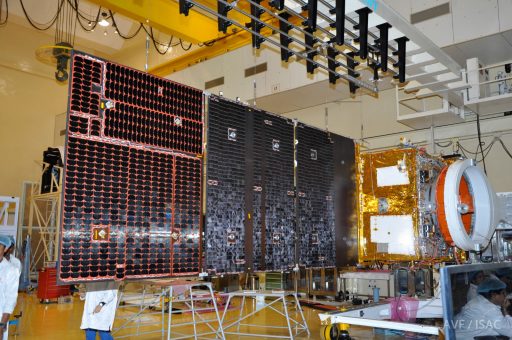
ResourceSat-2A was sent on its way just shy of T+18 minutes and ISRO officials were happy to report signals from the satellite were being received on the ground and video showed the two power-generating solar arrays had deployed as planned. Checking off its 37th consecutive launch success, PSLV continues to fill its role as India’s workhorse.
Heading into 2017, ISRO is currently looking at a manifest of seven or eight missions, picking up in late January with the first orbital launch of the GSLV Mk.III launch vehicle – India’s most powerful rocket. ISRO is also in the process of preparing for a pad abort test in support of the country’s human spaceflight ambitions.

